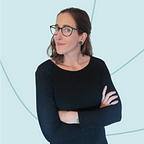Design Thinking | Citymapper app.
Ironhack’s prework · Challenge 1
Citymapper claims to be The Ultimate Transport App. The main goal of the application is to solve urban mobility by offering the best combinations of public and private transport to its users. It is present in 58 cities around the globe.
Although the current product of CityMapper solves some of the main problems of urban mobility, there is one pain point for many users: the different amount of public transport tickets the users have to purchase outside the platform.
Public transport tickets come in paper or plastic cards. Buying different public transport tickets is often necessary to go from point A to B., and the process of purchasing these tickets can be very annoying (queues, vending machines that don’t work, etc.).
Finally, things like pricing or purchasing the correct ticket can become a real pain when you are abroad.
The challenge is to create a feature for this app that solves the pain of having to purchase different public transport tickets by different channels.
How I approached the Challenge:
First of all I created a “big board” in @Figma so, in just one look, I could have a general view of the whole Design Thinking process and summarize the different tasks along its stages. If you wish, you can have a look at it here:
I started to “play around” with the app myself and asked a few friends to do so, as well. The next day I asked them some questions about the app itself and about their general experience using both public and private transport in their home cities and when abroad.
After that, I dropped a few conclusions:
- Purchasing the right transport ticket it’s always extremely difficult, even in your home city. Different transport and fare systems (peak/off-peak hour, zones, distance, price reductions), unfriendly vending machines and language barriers when abroad induce frustration and damage our feeling of self-efficacy.
- Different tickets means different ways of validating them, which quite often leads to that awkward moment when you are in a new city or using a new transport and you start rubbing the ticket all over the surfaces or trying to insert it in every slit you see or when you just start looking sneaky to the locals to know how it is meant to be validated.
- Having a single purchasing system you have got the chance to build confidence with by using it in your home city, improves your experience when abroad.
With all the findings from the previous stages I started prototyping. I found it much easier to draw the frames individually as single steps and then organize them to build the flow. It took me a few iterations to get to the final path (some frames needed to be splitted in order to make it simpler and intuitive).
Here you can find the final drawings:
My Learnings:
- Interviewing different people with different realities has given me the opportunity of thinking in a more open way. Obviously it makes things a bit more difficult when trying to find solutions, cause you are not reaching for the perfect solution for your individual experience but for one that answer as many different scenarios as possible.
- When ideating it’s hard just to accept all the emerging ideas without judgment and very easy either to fall in love with some of them or just trying to discard them without a try.
Thanks to Alex, Óscar, Paloma, Marta and Nano. For being my “guinea pigs” during this first challenge ♥.
